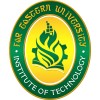Seminars and Trainings

Attendee
ISO 9001:2015 Retooling
Awarded by FEU Tech Quality Assurance Office on October 03, 2024
View Credential
Attendee
AI in the Workplace: Practical Applications for Educators and Associates to Improve Teaching and School Management
Awarded by Educational Innovation and Technology Hub on August 14, 2024
View Credential
Attendee
Review of Complex Engineering Problems
Awarded by FEU Tech College of Engineering on August 12, 2024
View Credential
Attendee
Data Privacy Act Awareness Seminar
Awarded by FEU Tech Human Resources Office on August 07, 2024
View Credential
Attendee
Nanolearning: Bite-Sized Content as the Next Big Trend in Contemporary Education
Awarded by Educational Innovation and Technology Hub on December 12, 2023
View CredentialResearch Publications
Conference Paper · DOI: 10.1109/HNICEM60674.2023.10589131
Genetic Neural Network for Diabetes Likelihood Prediction Using Risk Factors
2023 IEEE 15th International Conference on Humanoid, Nanotechnology, Information Technology, Communication and Control, Environment, and Management, HNICEM 2023, 2023
![]() Rex Paolo C. Gamara
Rex Paolo C. Gamara
![]() Antipas T. Teologo, Jr.
Antipas T. Teologo, Jr.
![]() Recto K.H.A.
Recto K.H.A.
![]() Neyra R.Q.
Neyra R.Q.
![]() Bandala A.A.
Bandala A.A.
Diabetes mellitus is a disease incorporated with carbohydrate metabolism whereas the body becomes unable to generate or react with insulin which leads to abnormal levels of blood sugar (glucose). In a worldwide perspective, Diabetes mellitus is ranked as the 9th leading cause of death based on the records of the World Health Organization and according to the International Diabetes Federation, there are about 463 million diabetic people worldwide in 2019 which is projected to increase to 700 million diabetic people by year 2045. In a regional perspective, about 251 million (45%) diabetic people resides on the Western Pacific and Southeast Asian region, whereas about 140 million people are undiagnosed of the disease. In this study, a genetic algorithm-optimized neural network using MATLAB was developed based on the risk factors. The experimental results show that the best validation performance has a value of 0.014129 and with a regression model coefficient R2 value of 0.95864.
Conference Paper · DOI: 10.1109/HNICEM60674.2023.10589079
Household Food Waste Monitoring System Using Convolution Neural Networks
2023 IEEE 15th International Conference on Humanoid, Nanotechnology, Information Technology, Communication and Control, Environment, and Management, HNICEM 2023, 2023
![]() Cana R.N.
Cana R.N.
![]() Berbano R.D.D.
Berbano R.D.D.
![]() Sarmiento P.O.
Sarmiento P.O.
![]() Amor J.M.
Amor J.M.
![]() Rex Paolo C. Gamara
Rex Paolo C. Gamara
Despite awareness of food waste consequences on environmental, societal, and financial aspects, no behavioral change towards food waste reduction is seen in the majority of Filipino Households. This study focuses on the creation of a food waste monitoring system that provides accurate figures to incite constructive behavioral changes. Thru the utilization of Convolutional Neural Networks coupled with image processing techniques, the system identifies and classifies food waste items, measures weight, and collects data for the consumers' viewing in a manner that is both informative and user- friendly. The device developed by the proponents involves two Raspberry Pi 4 Boards and one Arduino Uno board which are the main components of the device that simultaneously communicates to process the given food waste. The other components such as two RPI Cameras that can record in HD, detect food waste, and send the following data to be processed. Then, the weight is taken using height input from the user and EfficientDet algorithm is used for detecting different classes of food waste. Using 2D images that were captured the RPI Cameras, the proponents gathered images to make data sets and to train the device in such a way that it can determine weight and food class. After these steps, the food waste can now be thrown away automatically via the moving platform. After conducting tests, we successfully created a device with an impressive detection accuracy rate of 94.0952%, accompanied by an error rate of only 5.9075% and a precision level of 96.42156%. When it comes to weight detection, our device achieves an overall mean absolute percentage error rate of 9.9898%. Additionally, the tilting platform demonstrates a remarkable relative accuracy of 98.8889% with a success rate of 100%
Conference Paper · DOI: 10.1109/HNICEM60674.2023.10589039
From Model to Reality: An Extended Examination of the Dynamics of the Energy Trilemma Scores in Post-Pandemic Energy Consumption, Economic Growth and Emission Reduction Shifts in the ASEAN
2023 IEEE 15th International Conference on Humanoid, Nanotechnology, Information Technology, Communication and Control, Environment, and Management, HNICEM 2023, 2023
![]() Recto K.H.A.
Recto K.H.A.
![]() Rex Paolo C. Gamara
Rex Paolo C. Gamara
![]() Neyra R.Q.
Neyra R.Q.
This study aims to build upon the authors' previous work investigating the complex connection relating energy consumption, emission reduction, and economic development. Specifically, it focuses on the Association of Southeast Asian Nations (ASEAN) within the context of post-pandemic economic recovery. The methodology includes implementation of regression modelling using the MATLAB Regression Learner program that utilizes World Energy Council (WEC) Trilemma ratings as input predictors. A range of regression models are utilized and undergo thorough assessment using established metrics, such as Mean Absolute Error (MAE), R-squared Coefficient of Determination, Root Mean Squared Error (RMSE), and Mean Squared Error (MSE). Additionally, practical metrics such as prediction time and training time are considered. Through a comparative analysis of the results achieved by the 2023 model in relation to its predecessor, an evaluation is conducted to determine the suitability of previous model. This assessment leads to the identification of relevant policy implications that may contribute to sustainable energy trajectory of the region. This academic pursuit hopes to enhance the scientific dialogue by integrating empirical research results with policy imperatives, in order to promote the development of ecologically sustainable and economically resilient energy frameworks in the ASEAN region. Based on the results, the key discovery of this study pertains to the ever-changing nature of energy dynamics and the significance of flexible modelling in influencing regional energy strategies. Hence, it is essential for policymakers to remain agile to the ever-changing factors that impact environmental sustainability, energy security and energy equity.
Article · DOI: 10.20965/jaciii.2022.p0905
Mamdani Fuzzy-Based Assessment of Telework Capability of Philippine Government Employees
Journal of Advanced Computational Intelligence and Intelligent Informatics, 2022, 26(6), 905-913
![]() Vicerra R.R.P.
Vicerra R.R.P.
![]() Bandala A.A.
Bandala A.A.
![]() Pocholo James M. Loresco
Pocholo James M. Loresco
![]() Rex Paolo C. Gamara
Rex Paolo C. Gamara
![]() Mayol A.P.
Mayol A.P.
![]() Concepcion R.S.
Concepcion R.S.
![]() II
II
![]() Española J.E.
Española J.E.
![]() San Juan J.L.G.
San Juan J.L.G.
![]() Dadios E.P.
Dadios E.P.
Due to the advent of the COVID-19 pandemic, the Philippine government encouraged enterprises and businesses to utilize flexible work arrangements such as work-from-home (WFH) or telecommuting setup. Nowadays, the key components necessary for a telecommuting include a WiFi-enabled IT equipment, secured work environment, and reliable internet connection, while research shows that type of work and computer literacy are also key factors for telework implementation. Multiple studies in relation to telework have already been conducted but some studies were deemed inconclusive and need further analysis. Therefore, in this study, a Mamdani fuzzy-based model was developed for telework capability assessment for Philippine government employees based on four significant factors namely: internet speed, IT equipment availability, computer literacy, and type of work, which are expressed in linguistic representations. The proposed fuzzy system can provide a feedback telework capability score based on the four input parameters which may also be characterized with the potential telecommuting cost requirement.
Conference Paper · DOI: 10.1109/HNICEM57413.2022.10109407
Effectual Outworking of Environmental Sustainability, Energy Security and Energy Equity in the Energy Consumption, Economic Growth and Emission Reduction in the ASEAN
2022 IEEE 14th International Conference on Humanoid, Nanotechnology, Information Technology, Communication and Control, Environment, and Management, HNICEM 2022, 2022
![]() Recto K.H.A.
Recto K.H.A.
![]() Rex Paolo C. Gamara
Rex Paolo C. Gamara
![]() Neyra R.Q.
Neyra R.Q.
With the pandemic coming to an end, the world is expected to revert to most, if not all, of its economic activities prior to the pandemic to ensure economic recovery. However, this pursuit also impacts energy consumption, economic growth, and emission reduction. There have been several studies that have tackled this but only on a macro-scale and were focused on developed countries, so the context is different from Southeast Asia. Using regression modelling of World Energy Council (WEC) trilemma scores of the member countries of the Association of Southeast Asian Nations (ASEAN), its mathematical relationships with energy consumption, economic growth and emission reduction were determined, as well as its implications to sustainable energy policy in the ASEAN. The study found out that Gaussian Process Regression - Exponential GPR is the best fit model to use for this purpose. Considering the findings, policies to (1) encourage investments in clean energy, (2) push for clean energy transition, (3) reduce energy-related carbon dioxide emissions, (4) study the differences in energy use and efficiency across groups and (5) advocate energy savings were forwarded.


